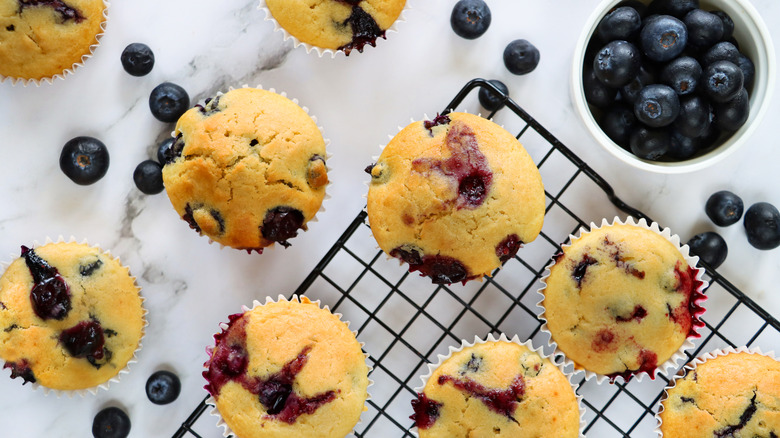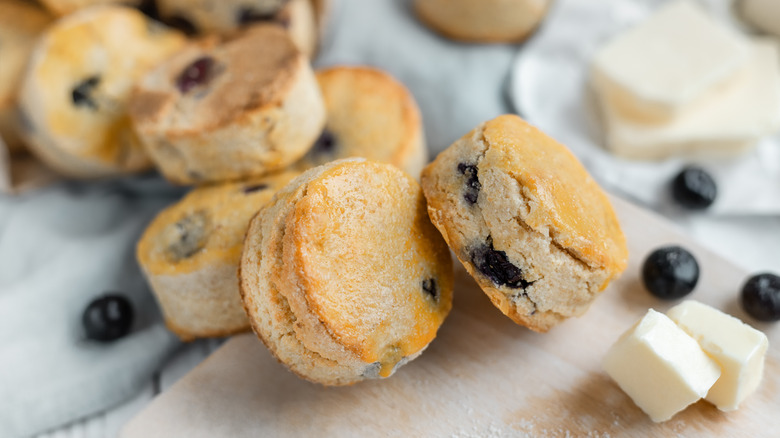The Tip You Should Always Consider When Baking With Fresh Fruit
Baked confections and fruit are a natural pairing. From strawberry shortcake to boozy cherry cheesecake to blueberry muffins, the natural sweetness of fruit goes hand in hand with classic cakes and baked goods. However, there's a bit of an art to getting the ingredients to come together just right. One wrong move and you'll end up with an unintended soggy muffin bottom, drenched in berries while the top part is void. Perhaps even worse is a fruit that loses its identity, conforming to a runny blob of juice as it bleeds throughout the bread or cake.
There are many glorious benefits to baking with fresh fruit, but for the best results, you'll need to handle them with care. One tip many professional kitchens employ is to coat fresh fruit with a dusting of flour before adding it to the batter. This serves a few functions that are important enough that you might want to consider making it part of your baking routine.
Benefits of coating fresh fruit with flour before baking
The juicy ripeness of the perfect pear, plum, or blackberry is enough to make your mouth water at the thought. However, when added to a recipe like blueberry lemon scones, that same fruit can affect the texture due to the moisture content. When using fresh fruit in your baked goods, dry them after washing by allowing them to rest on a paper towel. Then coat them with a light layer of flour to help lock in moisture and keep it from bleeding out into your food.
Dusting your fruit also gives it some texture, making it less likely to sink to the bottom of the batter — a complaint of many home bakers. Keeping the fruit evenly distributed throughout the batter provides a balance of fruit and cake with each bite, gives a more consistent appearance, and ensures the texture you expect from your baked delicacies.
Since adding a touch of flour can take you above the amount the recipe calls for, set aside a tablespoon or two when adding flour to the batter. Use that reserve for your coating so you don't risk drying out your cake or bread from excess flour.
Other tips for baking with fresh fruit
Freshness is the goal when selecting fruit for baking. If using berries, give that carton a shake to check for quality. When fruits are in season, take advantage of the local farmers' market for the freshest finds. Once home, use your fruit within the first few days.
Use whole berries in your baked goods to minimize bleeding. For larger fruits like strawberries or plums, you can cut them into pieces and allow them to dry on an absorbent surface before adding to the batter. Regardless of the type of fruit, use a tender hand when combining ingredients. Gently fold fruit into the batter, or layer it with dollops of batter to avoid stirring altogether.
If coating cut fruits with flour doesn't keep them from sinking to the bottom, try cutting them into smaller pieces to make them lighter. Also, consider the type of batter you're using. Fruit will naturally sink more in a thin batter, so it will be challenging to keep them evenly distributed throughout a thin cake mix, but won't be a problem in a denser batter such as muffin mix or banana bread.
Remember that if the recipe calls for canned or frozen fruit, other adaptations have been made to accommodate those specific types so you may not get satisfactory results if you sub in fresh. The same is true for swapping out fresh fruits with heavier canned or moisture-rich frozen options.


